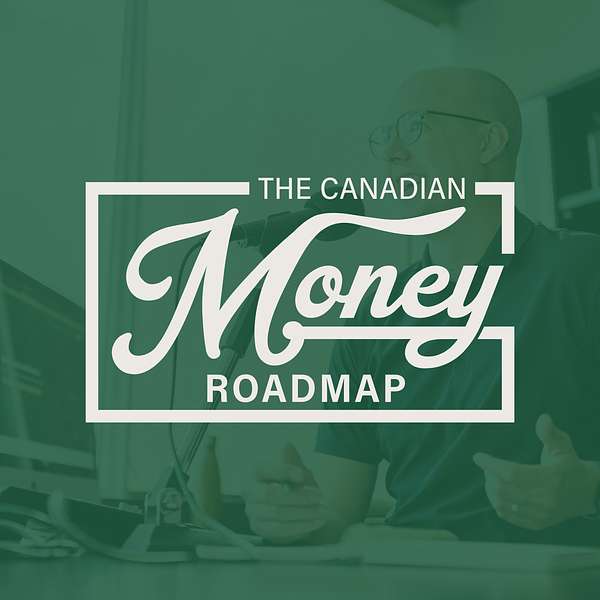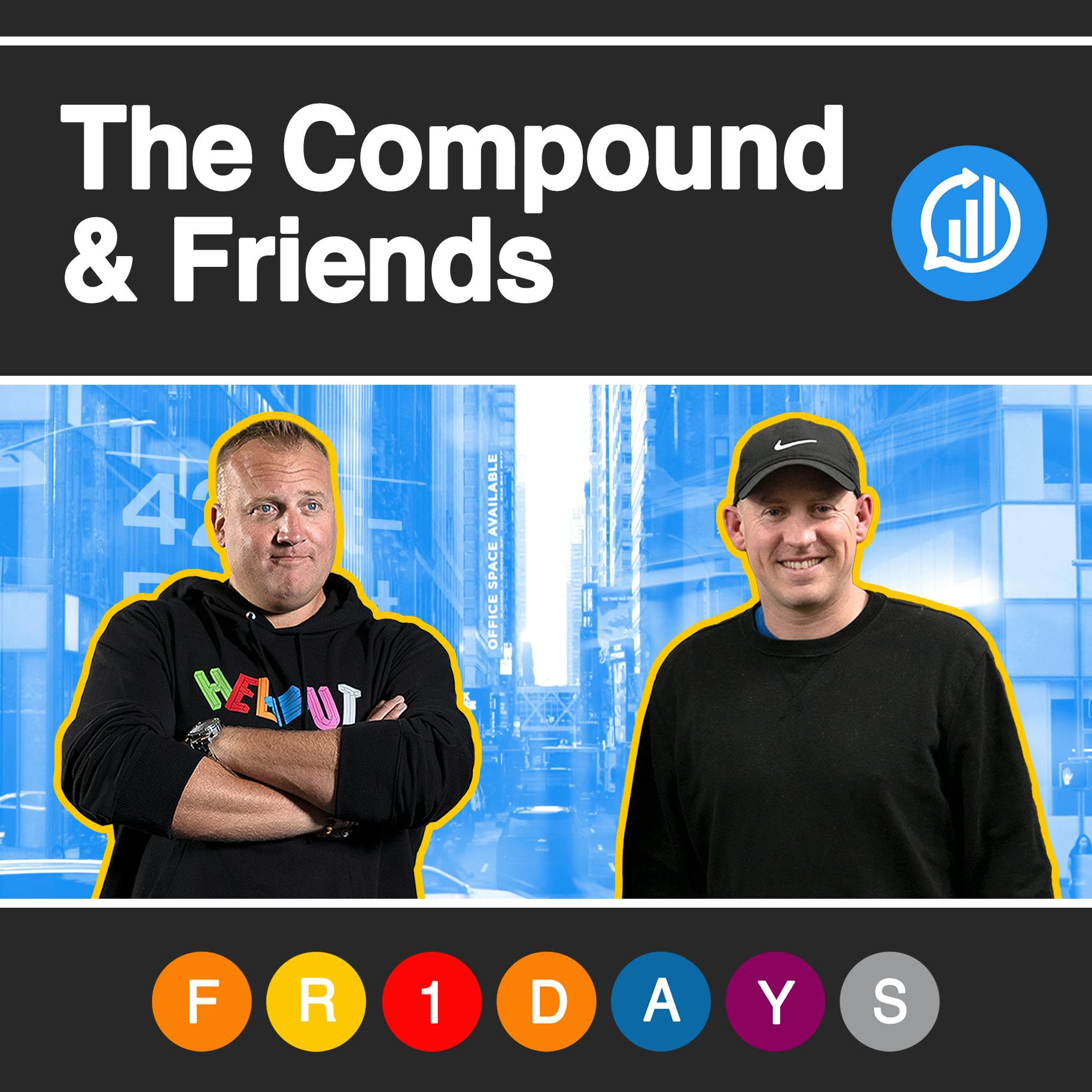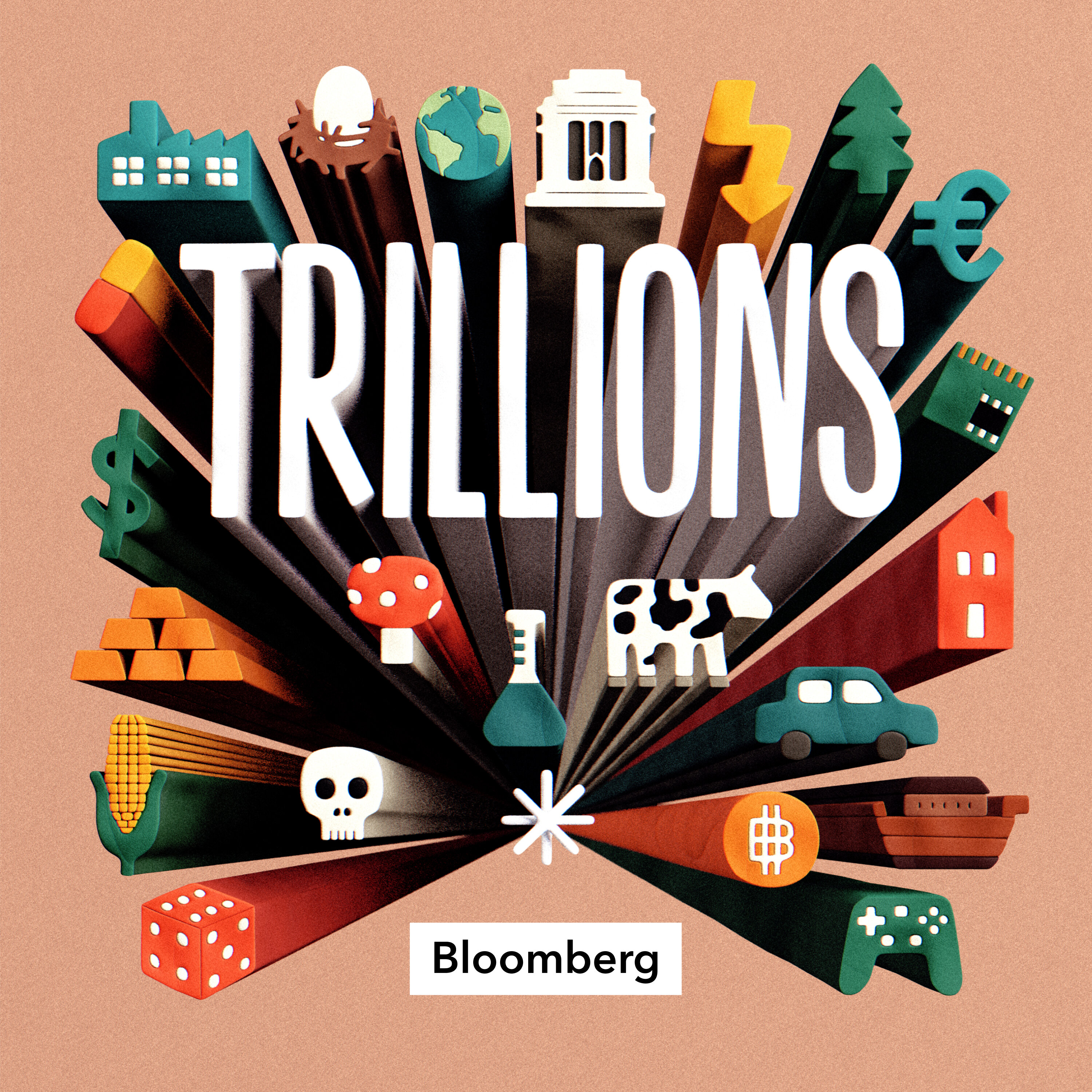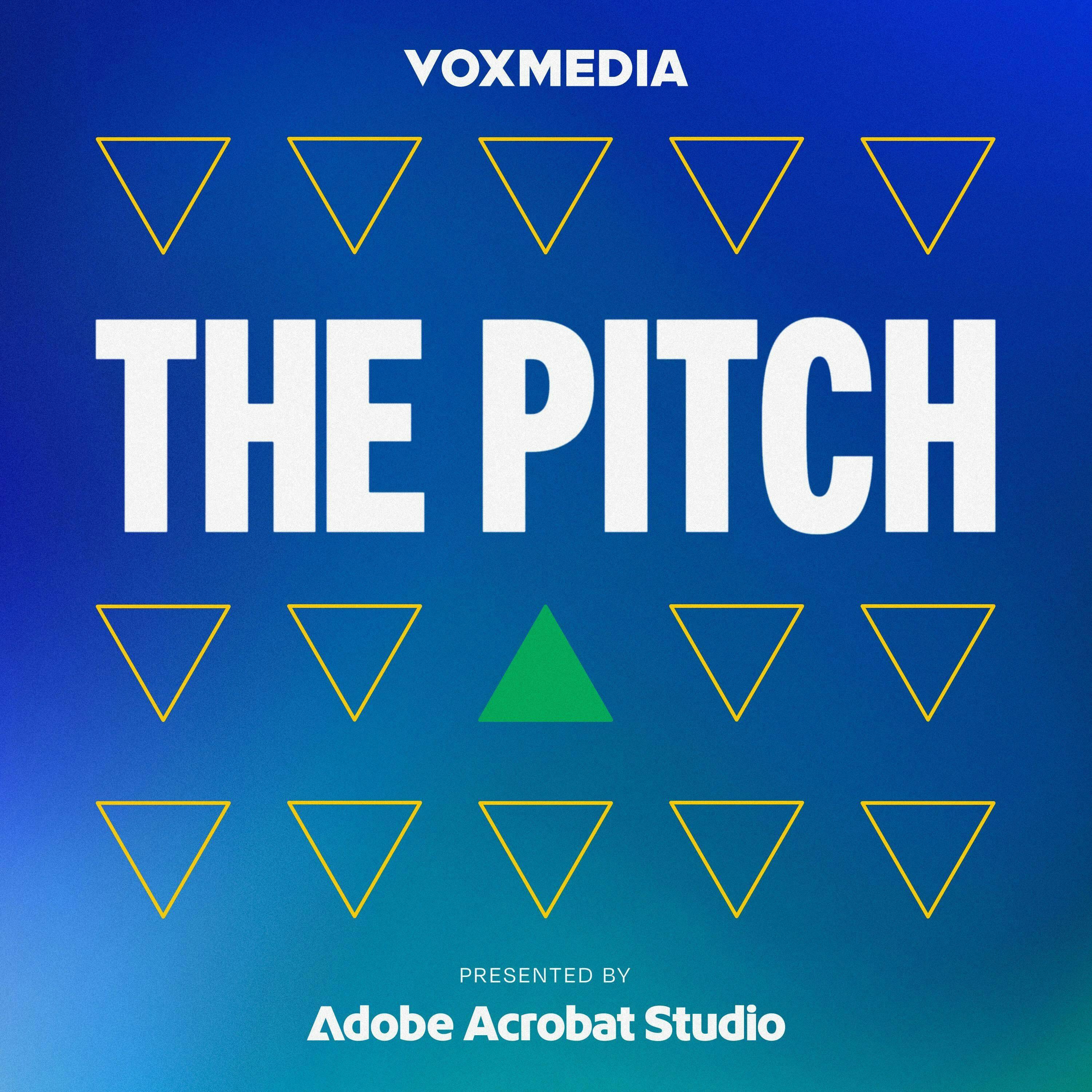
The Canadian Money Roadmap
Invest smarter, master your money, live & give more
The Canadian Money Roadmap
How to invest your first $100,000
Diversification, participation and automation are the keys to getting your first $100,000 invested. It's the hardest milestone to reach but the most important one for building your long term wealth. Whether it's for retirement or financial independence or generosity, the sooner you can get to your first $100,000 the easier the rest of it becomes.
Download the Roadmap to $100,000 spreadsheet here
🌳 Connect with Evan and Cedar Point Wealth | Services and Pricing
🗣️ I want to hear from you! Record your question here and you could be featured on an upcoming episode of the podcast
✨ Get your money organized - Your Full Financial Picture Spreadsheet
Hello, and welcome back to the Canadian Money Roadmap Podcast. I'm your host, Evan Newfeld. On today's episode, we are going back to the essentials, and we are gonna be looking at the things you need to consider when investing your first$100,000. Many people who are familiar with the investing world know who Warren Buffet is, but lots of you probably don't know who Charlie Munger is, but Charlie is actually Warren Buffett's partner and he does a lot of the investment strategy on behalf of Berkshire Hathaway. Which is Warren Buffett's company, and Charlie Munger has a famous line that is attributed to him, but when I've looked online, it seems like it's more attributed to bloggers that are referencing him. So I don't know if it's actually from him or not. Anyways, he talks about the idea of when you're investing, you need to do whatever you possibly can to invest your first$100,000. It's the biggest hurdle. It's the hardest, but it's also the most impactful over your long-term success. He talks about taking the bus and doing all these different things, cutting all your costs and getting all your money invested in the market as soon as possible. That's not what I'm gonna be talking about today, but just the idea that investing your first$100,000 for the long term will have the most impact, but it's also the most difficult. So today on the podcast, I want to talk about the things you should be focusing on. To be able to invest that first hundred thousand dollars. First things first. Where's the money gonna come from? That's always the hardest thing, especially for new investors. If you have not taken a look at your own spending habits, that's a good place to start. When you can start tracking your expenses, see if you can find any sort of wiggle room in that budget to be able to save for the long term. I always recommend that people invest first and then spend the rest, but it's intuitive to spend everything you can and say, oh no, there's nothing left over. But if you include your investing as part of your budget every month, that's a good way to think about setting aside some money as a priority. If you already have some of this wiggle room, that's great, and that's a good place to start for that. But for those of you that don't really have much wiggle room, a lot of people will find the opportunity to invest through their workplace plans, including RSPs. That's probably the most common thing that I've seen is R S P matching programs. And so that's a good place where money can come from as well. The final place where The funding for your first a hundred thousand dollars investment portfolio will come from, could be from your tax refund. So many of you who are listening get a tax refund every year and instead of spending that money or paying down debt, I'll be careful there cuz you should probably pay down high interest debt first if you have any of that. But if you've already taken care of those things, using your tax refund as a way to. Plant the seeds for your first investing portfolio would be a great way to do that. It's often a few hundred dollars, in some cases, a few thousand dollars. That's a great place to go. Second thing that you want to consider is where it should go. I'm gonna make this really simple. This is not an TFSA versus RSP podcast. My recommendation is that if you're thinking about how to invest your first a hundred thousand dollars, TFS A is the no-brainer. It is absolutely what people should be considering when they're first starting out. What we're not trying to do at this stage is optimize for anything. So the RSP is all about optimizing because it all depends on what tax rate you're in and what tax rate you might be in, and what you do with your refund and the mechanisms of this and that. The TFSA is so much simpler. And the benefit in many people's cases is so much higher. And if it ever comes out later in your financial journey, that RSPs should be the account type that you prioritize. You can withdraw from your T F S A and put it in your R S P and get that benefit at that time. So for the most flexibility, for the most tax savings for the greatest after-tax gains possible, I think you should start with your T F S A. Especially if you're unfamiliar with these plans and you don't really know what would be best for you, you could do a whole lot worse than prioritizing your T F S A. So, in my opinion, I'm gonna stop there because you can really do a lot of good by going the T F S A route when you're building your first a hundred thousand dollars. Now, how should that money actually be invested in the context of this podcast? I'm talking about a long-term investment portfolio. This wouldn't be saving for. Your first house or saving for your kids' education or things like that. This is saving for call it retirement, call it financial independence, call it whatever you actually wanna call it. This is your long term money that will help you decide whether or not you actually wanna work for your living or not. So if your time horizon is long, and I'm talking about 10 plus years, You should really think about investing in the stock market because of the potential gains that will come from that When you add in bonds, historically speaking, bonds have decreased your risk, but it's also decreased your potential returns. So there's a lot of evidence that points towards anyone that has a long-term time horizon. If you're looking to optimize for your greatest gains over a long period of time, the stock market is the place to do that. What I'm not advocating for in this case is picking individual stocks like, well, I should have some td, maybe I'll have some Nike. Maybe I'll get some Lululemon in there. Nope, don't worry about that. Again, we're trying to simplify and get you started here. Okay. So I would highly recommend that you utilize mutual funds or ETFs to get started by investing in the stock market. Simple version. Mutual funds are ETFs. They are pools of stocks and bonds in some cases, but it allows people to invest in a really broad, diverse group of stocks for a really low price and it's a really accessible way to do that. If you were to build your own diversified portfolio with individual stocks, you would need thousands and thousands and thousands of dollars just to buy one share of each company that you want. But with a mutual funder, et t F, you can very easily get started with as little as 25 bucks in some cases. Investing in the stock market and you get the gains associated with that diversified portfolio as well. So what do I mean by diversified? Well, if this case, if you're looking for a hundred percent stock portfolio, I would recommend that you diversify by sector and by country. And so that means not just having a Canadian portfolio, not just a US portfolio, not just an international, but probably something that's a combination of the above. So how do you even know what to do with that? you can uh, take a look. At a website like Morningstar, and you can go in there, search bar, and you can type in the fund that you're thinking about or the fund that you already own. And you can look at some of the characteristics of those funds in particular. But let's just look at some funds that many of you are familiar with. So if you have been a DIY investor before or you've been looking into resources in that regard, you've probably heard of Vanguard before and they're all in one. ETF portfolios. So V E Q T is there a ticker symbol that I'm gonna be talking about here, and it's an etf, which is again, just a group of stocks or other ETFs in this case even that will allow you to invest in a really diversified portfolio very, very simply. So the diversification here, it owns four different ETFs inside of it. And they are what I call total market ETFs. So it's looking at everything, not just the biggest chunk, but the, the whole thing. So it owns the US Total Market Fund, the Canadian All Cap Index, the developed. All Cap X North America. So think of places like Europe. Japan, places like that. So those are what we call developed markets. And then about seven and a half percent of it is in emerging markets. Why is that important? Well, if you look at the returns of these different places over the course of time, You never know which country is actually gonna be performing the best. And so diversifying by country as opposed to familiarity. You know, a lot of our media is US based and we live here in Canada and so a lot of that content is Canada and US centric. But there are plenty of other fish in the sea. And so having a globally diversified portfolio can really make sure that you take advantage of some of those opportunities when they show up elsewhere. And so, A fund like this one is just one fund. It's very, very simple. It's very low cost, and you get global diversification. You do not get any exposure to any one single stock necessarily from a risk perspective, but also from a return perspective, I guess. But it is a great way to participate in the markets very, very simply. When you're first getting started with investing, the two priorities you should have are to participate, and to automate. If you can use an investing platform that allows you to invest in whatever fund or ETF that you want automatically. So you don't have to think about it. That is a fantastic way to do it. But the other side of that was the participate angle. What I mean by that is to get the returns from the stock market, you just have to be in the game and you have to have a diversified portfolio. You don't need the cheapest, you don't need the simplest, you need to just be in the game to be able to get it. So if that means that you're currently in a fund at the bank or with an advisor, your parents hooked you up with. Or someone you've chosen or a DIY situation, it largely doesn't matter what the specifics are, as long as you're globally diversified and you actually know what you have and you're participating in the markets. So participate and automate is the thing that you need to focus on right now. Yes, low cost is good. Yes, many times you could build an even cheaper yet portfolio by buying the underlying ETFs themselves and whatever. No, at this point, when you're building that first a hundred thousand dollars, the simpler is better. And we don't need to worry about optimizing because you're picking up pennies for no real value. It will not meaningfully accelerate your journey on your way to, to your first a hundred thousand dollars. Once you're dealing with bigger, absolute numbers and you've spent some time investing and you've built your system for automating and all these different things. Then you can start to look at optimizing as a way to keep more of your money and to make things even simpler and maybe increase diversification depending on how you're invested at the time, or even adding some things that you find are a little bit more interesting. But I wouldn't. Add sleeves of anything interesting yet, so things like crypto or sector funds or that you know, shares of the junior oil company that your buddy's working at in middle of nowhere. worry about any of that. Just get simple. Get one diversified fund and just keep going as hard as you can, as often as you can. Okay, so we've covered off where the money's gonna come from. Maybe it's your own savings, maybe you need to do some budgeting. Maybe that comes from your workplace plan, or maybe that's from your tax refund. From my perspective, if you're just getting started, just learning, I think it should go into your T F S A, unless it's through a workplace plan, that's an R S P. Don't worry about it. But if you're choosing, I would say go T Fs a first, and then from there, your investment strategy. It should be simple, it should be diversified, and it should be automated. If you can do that. Lastly, one of the things that's probably the most important as far as getting your first a hundred thousand dollars invested in the market is understanding the expectations. It's like, okay, well that's all well and good, but I can invest 200 bucks a month. How long is that gonna take? Oh, my whole lifetime. Ah, I'm not gonna even do it. So setting expectations, I think with anything is probably one of the most important things that you can do, just so that you can have an idea of what is possible and then you can also figure out things that you can do to change that timeline to accelerate. Okay. So I'm gonna talk here a little bit about volatility and some of the ups and downs. Also some return expectations and how long it might take. I'll jump ahead here a little bit. If you look into the show notes of this episode, I did build a spreadsheet. It's very simple, but you can put in a little bit of your own information in there, and you can judge your own pace on your roadmap to a hundred thousand dollars. You can add in what you currently have, how much you're saving, and what your expected rate of return is. I'll get to that in a second. And then on the front page of the, the spreadsheet, it spits out a number for the estimated time. It'll take you to get to a hundred thousand dollars portfolio. Pretty simple, but of course, you know, there's no guarantees here. I, this is just for educational purposes only. I've got all the disclaimers in there. But it's Is the most common question I get is people don't understand what kind of pace they're on for their investing journey. And this spreadsheet will be able to help you get a best guess on that depending on what you're already doing with your money. Okay, let's talk about the ups and downs here. So this is something you really need to know along the way on your investing journey. So let's talk about that same etf, that V E Q T. So that's vanguard's all equity ETF portfolio. Again, it's simple, it's low cost, it's globally diversified. Love it. Over the last three years, it has averaged 12.43%. After fees. Fantastic. That's really good. I would say that's much higher than expected on any given year going forward so far. Year to date, this is kind of at the, the beginning of May. Here it's up about 7% this year. Fantastic. here's the big however. Last year, it ended the full calendar year of 2022, down 10%. The previous year was up 20. The previous year before that was up about 11. Okay. So there are gonna be some ups and downs. Heres so since the fund was launched, it hasn't been around for very long, truth be told. But since it launched, it has had a maximum drawdown at any one point. So that's from a, from a high to a low of nearly 17%. Okay, so there are real periods of time where even an index fund, like the one that I'm talking about is down and it's down a lot. Okay? I'm not saying this as a way to time the market, or you need to get out before doing that. No. This is about setting expectations of what you should expect on your way to a hundred thousand dollars. There will be periods of time where you are gonna be down significantly and for an extended period of time, what are you gonna do about it? You're gonna participate and you're gonna automate, you're gonna keep going, and you're gonna get the returns, but also the risk that comes along with the stock market. But you're gonna automate your purchases so that when the market goes down, you can continue to buy shares and actually buy more when the prices are down. But you're gonna keep doing that. You're not gonna try to get cute and change it. You're just gonna keep going to participate and automate your way to a hundred thousand dollars. Perfect. So how long is this thing gonna take? How long is it gonna take for you to get to a hundred thousand dollars? But we've talked about a few variables already. One of the main ones, of course, is your savings rate. But also your rate of return and what you're starting from. Maybe you already have some, or maybe you just got an inheritance or maybe you got a big bonus or something like that. So those are the three main factors that will determine that. So if you've downloaded my spreadsheet, what I'll point you towards is the second page. There's two little pages on there. One of them is called data, and you click on the data and there's a few different green boxes to put in there. So the thing that you'll do is you'll put in your current value where you currently have invested, and then your annual investment. So that's how much you're able to add your portfolio every year. And those are two critical factors for determining how long it's gonna take to get to a hundred thousand. But beyond there is also, it's critical of how you're invested, right? So if you're someone who just has cash, even though you can make a little bit of money on a savings account these days, it's probably not going to outperform the performance of the stock market going forward. So I built a little grid here based on. The standards from FP Canada, so that's Financial Planning. Canada, we get every year a projection assumptions guideline document that says, based on a variety of different factors and their assessment of expected returns. No, it's not trying to be forecasting or anything like that. This is something that that they do to. To give us as financial planners some guidelines for what is reasonable depending on how someone is invested. So we have five different categories here of cash and short term bonds, Canadian equities, foreign developed equities, and emerging market equities. So you might remember those terms because I talked about those already with the Vanguard etf. So whatever your portfolio currently is, you can kind of plug in what percentage goes into what category, depending on how you're invested. And then based on the FP Canada assumptions, it spits out. A weighted expected return that you can use for the projection. And my spreadsheet has already done this for you. You could build this spreadsheet. Yes you could, but I just saved you about three hours of doing the research and building it yourself. And it's free. Just uh, pop your email in there and you can get it in your inbox today. So then if you click back onto the first page, you'll see the, the path to a hundred K. And the number of years that it'll take based on how much you currently have, how much you're saving, and what your expected rate of return is over the next period of time. It's not gonna be perfect, but it'll give you kind of a guideline of what to expect in there. So as you're messing around with this, the two factors that will make the biggest difference. If you wanna start using numbers that aren't actually yours, the two factors that'll make the biggest difference are your current value. Obviously, as if you're at 99,000, it's, it's pretty close. So your current value is, is the, the greatest factor there. But also, let's assume you're at zero. Everybody's at zero. Your greatest factor between your rate of return and your annual investment. It's your annual investment. So this is your savings rate. This is how much you can actually add to this thing every year. And the rate of return, yeah, it matters, but it matters so much less than quests trade or anybody else would make you think. For example here, so if you're able to do 500 bucks a month into your portfolio and you can get 3% pretty low expected rate of return. Historically, but if you get 3%, it'll take you 13 and a half years. Okay? Not great. It'll take a while. However, if you can get 13% per year. So that's much higher than we would expect going forward, and it's much higher than what most people have gotten in the past. Consistently, but you're doing 500 bucks a month at 13%, still takes you nine years. So if you can get a 400% higher rate of return, so it's four times or more than four times, you only get there 33% sooner if you're starting from zero. So the, the only thing that really matters is your savings rate. It's like, yes, low cost matters. Yes, optimizing matters, but it matters more later. Just get started and participate and automate. Those are the two things that'll make the biggest difference for you. So if you're currently with someone at the bank, don't worry about it. Just get going and then figure out the details later. You don't need to necessarily be a DIY investor to be able to get to a hundred thousand dollars any sooner. But if you are starting from a really good baseline, you have some money invested already, and you have an income level where you actually can invest a lot of money every year, that's when your rate of return really starts to matter. And so optimizing for. For growth looks different for someone in that case, but just as a general rule of thumb, Your savings rate is the thing that matters the most at the very, very beginning. Okay, let me summarize how to invest your first a hundred thousand dollars. I would say figure out where the money's gonna come from. Is that your own savings? Is that your workplace plan, or is that your tax refund every year? Then I would say probably put it into your tfs. A if you want more specialized advice, you should speak to a financial planner about that. But just in general, if you're looking for the right plan to put it in, start with the T F S A, especially if you have the room to do it. Then from there, your investment strategy should prioritize diversification, participation and automation. yes, all these other things are good that we've talked about, but don't sweat it. Just get diversified, participate in the market, and if you can automate your savings, that is the best. Expectations along the way, anticipate the down markets. This will be down at many points along your journey. You might get to a hundred, and then it might drop down to to 80 again, because of what's going on in the stock market, that's okay, but keep going. This is all about building your system That will get you there and your systems will also get you not just to a hundred thousand, but it'll be the same system that gets you to a million. So there will be down periods, but your rate of return matters, but it matters a whole lot more. Once we get further down the line in my spreadsheet that I included there, you can calculate your own expected rate of return based on how you're invested already. As a reminder, go into the show notes of this episode and download my roadmap to a hundred thousand dollars spreadsheet. And take a look for yourself. Let me know what you think of of the spreadsheets and this episode. If this was helpful for you getting started I'd love to hear about it, thanks so much for listening this week and I'll catch you on the next episode. Thanks for listening to this episode of the Canadian Money Roadmap Podcast. Any rates of return or investments discussed are historical or hypothetical, and are intended to be used for educational purposes only. You should always consult with your financial, legal, and tax advisors before making changes to your financial plan. Evan Newfeld, disease Certified financial Planner and registered investment fund advisor. Mutual funds and ETFs are provided by Sterling Mutual Zinc.
Podcasts we love
Check out these other fine podcasts recommended by us, not an algorithm.

The Rational Reminder Podcast
Benjamin Felix, Cameron Passmore, and Dan Bortolotti
Animal Spirits Podcast
The Compound
The Intelligence from The Economist
The Economist
The Compound and Friends
The Compound
Trillions
Bloomberg
The Journal.
The Wall Street Journal & Spotify Studios
Standard Deviations with Dr. Daniel Crosby
Dr. Daniel Crosby
